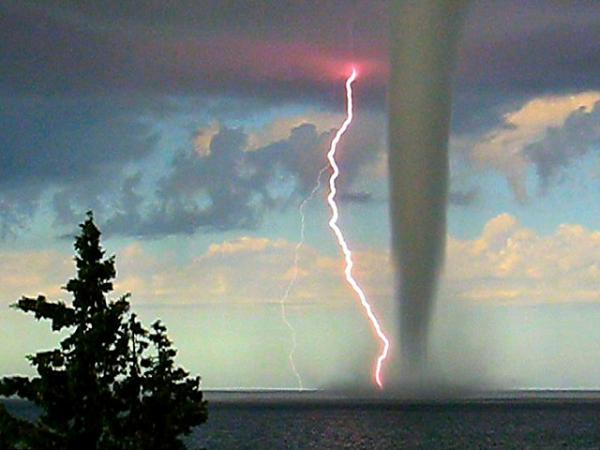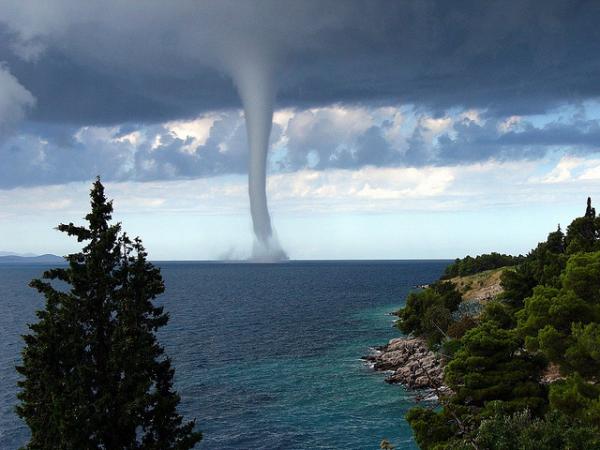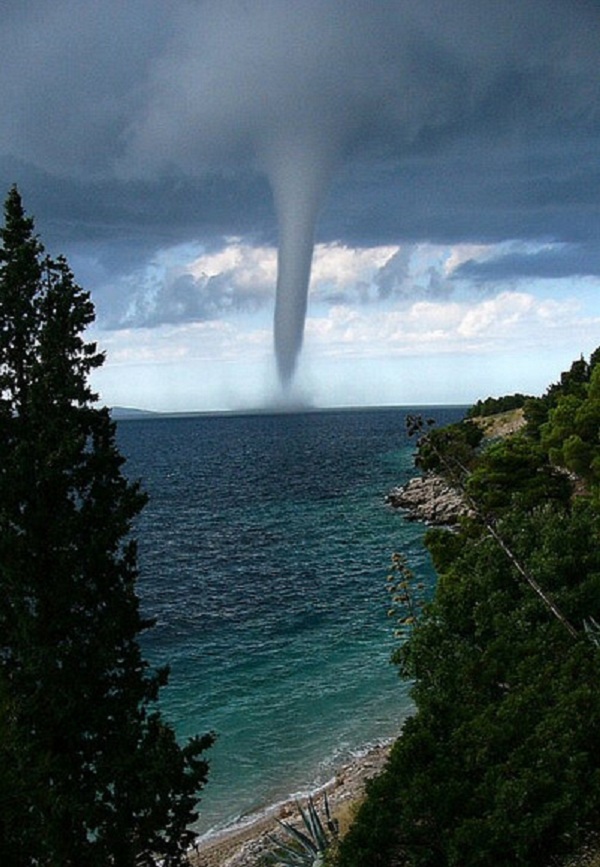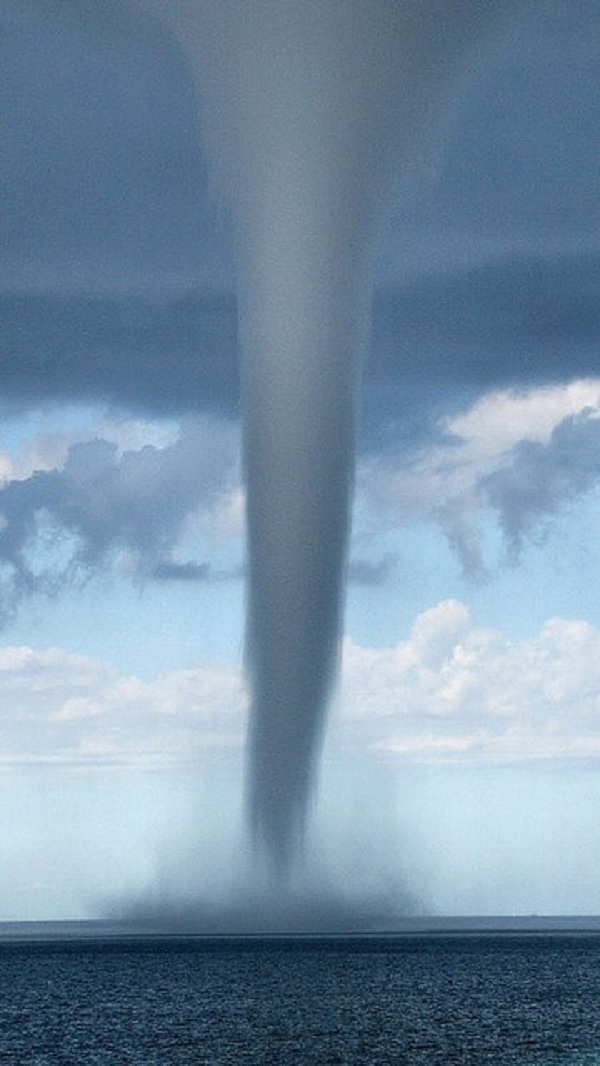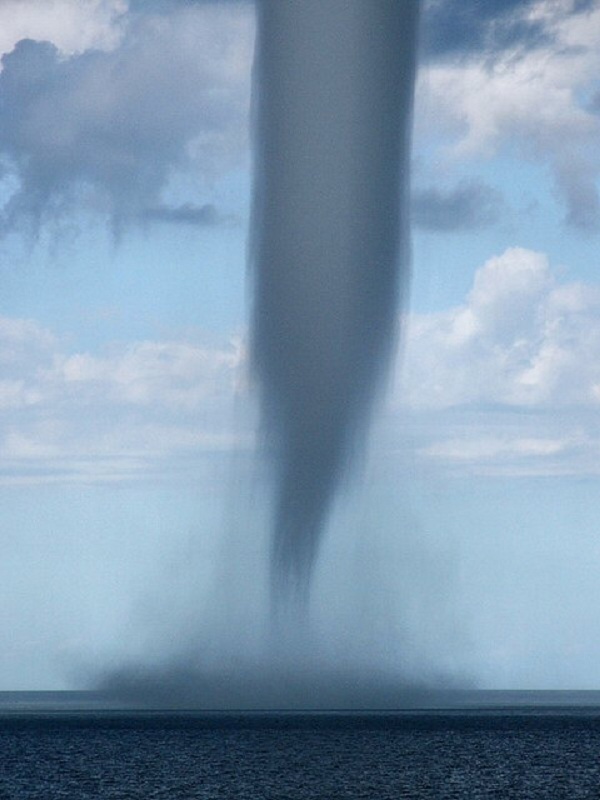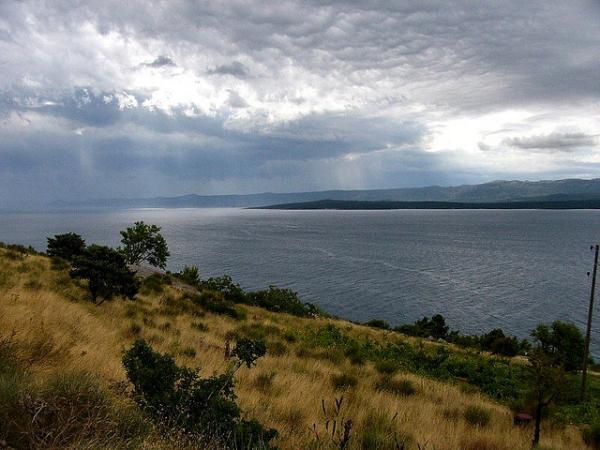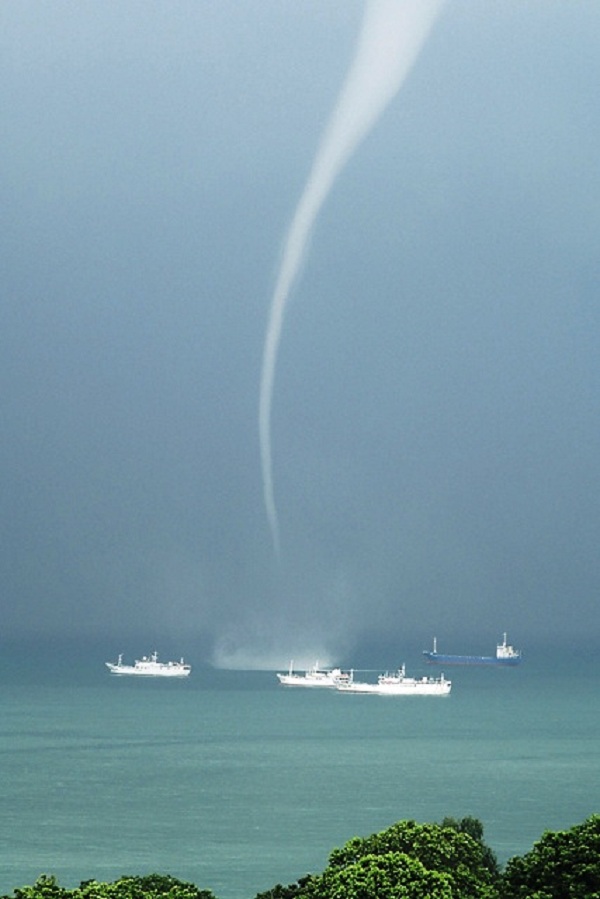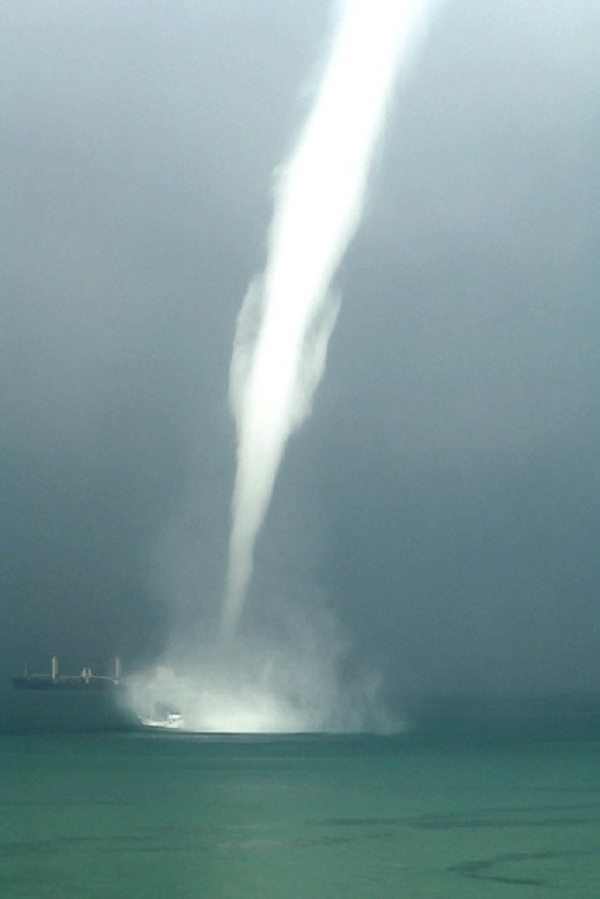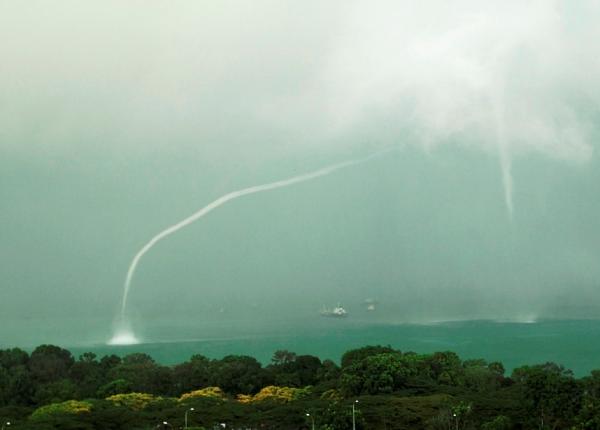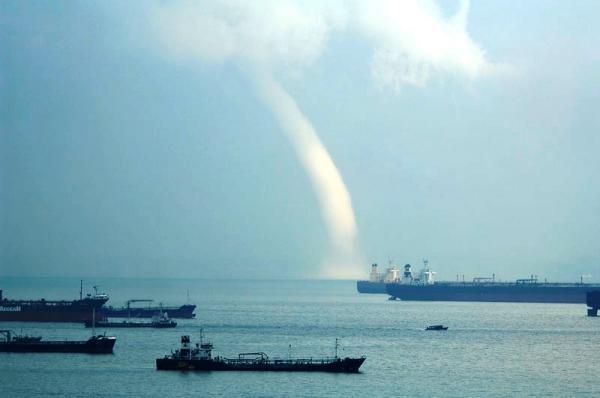A waterspout at sea can suck sea creatures into the air and when it dissipates, these animals can fall to land miles away.
For ages, tornadoes have been a natural phenomenon that has frightened people. Since the late 19th century, research on this phenomenon has provided people with interesting insights into tornadoes.
This tornado was captured by photographer Mladen Duka while he was walking on the Croatian island of Brach in the Adriatic Sea, a sea located in the northern Mediterranean. This is one of the most frequent areas in the world for tornadoes. Because they form at the base of giant cumulus clouds, tornadoes are often accompanied by lightning.
Depending on their location, waterspouts are divided into two types: land-based waterspouts and sea-based waterspouts. Sea-based waterspouts are further divided into two types: those that occur during fair weather and those that occur during major storms. In this photo, the weather conditions are relatively stable: the sea surface is relatively flat and there is almost no wind.
From the weather conditions above, the seasprays in the photo are of the “fair weather” type. They are more common and less intense than stormy seasprays. They typically move slowly or rarely over the ocean surface.
These “fair weather” waterspouts are common in warm coastal areas in the tropics and subtropics. They are formed by the interaction of warm ocean water and cold air above. The waterspout pictured here is classified as weak, with wind speeds of no more than 30m/s and a duration of no more than 20 minutes.
On the EF wind scale, it is only rated EF0 (the weakest on a scale ranging from EF0 to EF5). If this waterspout were to make landfall, it would dissipate almost immediately.
In the photo, the funnel of the tornado looks like it is sucking seawater into the swirling air. But in fact, the tornado is not “sucking” water from the surface of the ocean up into the sky. The turbidity of the tornado is caused by the dense water droplets at the bottom of the cumulus cloud, not the seawater being sucked up.
According to witnesses, the waterspout suddenly disappeared and immediately after that, the atmosphere became extremely stuffy and a heavy rain shower occurred.
This image of a waterspout in Singapore Harbor was taken by photographer Jerry Liew. These waterspouts can suck sea creatures such as fish into the air and when they dissipate, they can fall to land miles away. Strange rains have been recorded such as raining lizards in Montreal (Canada), raining tadpoles in New York (USA) and raining toads in France.
Waterspouts can be deadly to observers. When faced with a waterspout, seek shelter in a sturdy building, basement, or ditch. The best way to avoid a waterspout is to move horizontally, at a 90-degree angle to the direction of the tornado’s motion.
In the photo, two waterspouts form at the same time from the base of a cumulus cloud, one of which is curved. There have been recorded cases where up to four waterspouts appeared at the same time.
Although a waterspout over water is only as powerful as a weak tornado over land, it can still threaten the safety of boats and swimmers at sea. Waterspouts over water can also occur over rivers and lakes.
